The main theme of “carbon neutrality, carbon peak” is the vigorous development of new energy technology, with widespread applications of wind energy, photovoltaic, hydrogen energy, and other energy storage technologies. Lithium ion battery technology has made significant progress, promoting comprehensive breakthroughs in the application of lithium-ion batteries. Electrochemical energy storage is an important part of the “dual carbon” energy reform, and accidents at energy storage power stations are also a new challenge faced by firefighting and rescue teams. With the large-scale application of electrochemical batteries, battery safety accidents continue to occur in China. The enthusiasm for investment and construction has to some extent concealed concerns about safety. Safety is the first element in the evaluation of energy storage battery technology, and economic benefits should be ranked second. A battery pack, like a gasoline tank, is a component containing high-energy substances and does not have an absolutely safe battery. Batteries are inherently dangerous, and although increasing the risk of accidents is a matter of probability, the danger cannot be completely eliminated, and measures can only be taken to reduce the probability of battery accidents. Therefore, the use of batteries should be treated like the use of flammable and explosive materials. Internationally, lithium-ion energy storage systems have been planned at all levels and corresponding requirements have been formulated.
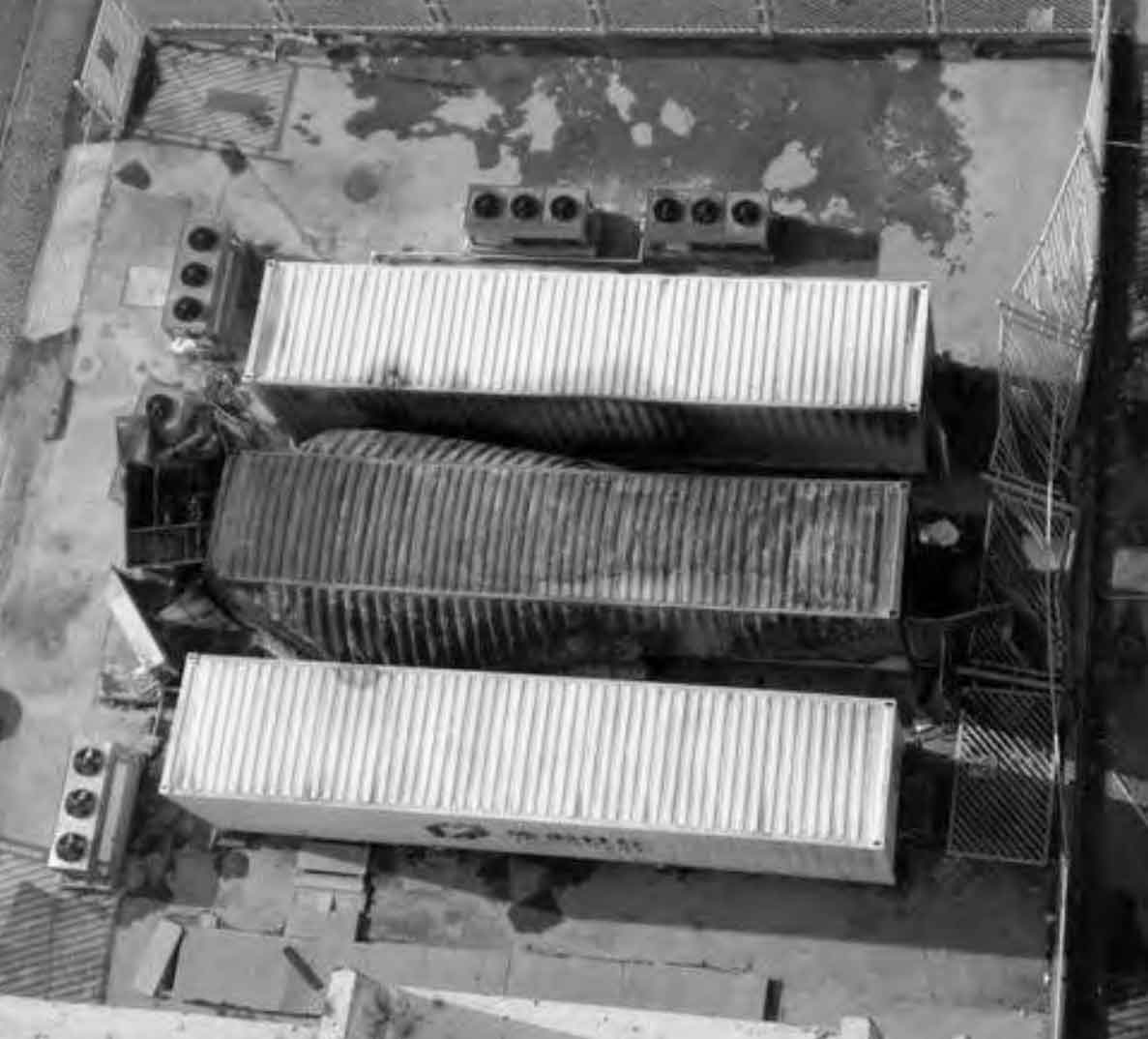
The key to the safety of energy storage systems lies in the high density, flammability, and explosiveness of electrochemical energy storage batteries. Among them, various factors such as battery voltage, capacitance, and electrode materials all pose the risk of fire and explosion. Traditional firefighting technology is at a loss for battery fires. The energy storage system that has repeatedly experienced fires basically applies traditional fire extinguishing technology. Due to the lack of understanding of battery fire characteristics in the field of fire protection, incorrect fire design and outdated fire extinguishing technology have caused frequent energy storage fires, making fire protection equipment useless. In recent years, there have been multiple fire and explosion safety accidents in energy storage power plants both domestically and internationally. On March 7, 2017, a fire broke out in the AGC frequency regulation project of the auxiliary unit of the energy storage system in a thermal power plant in Shanxi, which destroyed one battery storage unit, 416 lithium battery packs, 26 battery management system packs, and several related facilities, resulting in the shutdown of the energy storage project for 30 days. On July 2, 2018, the 4 MW/12 MWh lithium-ion battery energy storage station at Lingyan Wind Farm in South Korea caught fire and exploded, causing a 708 square meter building, over 3500 batteries, and supporting facilities to be burned down. According to preliminary calculations, the economic loss caused by this accident reached 4.6 billion won. In April 2021, an accident occurred at the Fengtai Energy Storage Power Station in Beijing. During the firefighting disposal process, other areas exploded again, causing firefighters to sacrifice and be injured, and the power station employees to lose contact. Lithium ion batteries have the potential for thermal runaway and explosion accidents, which is a key concern in energy storage applications. Energy storage safety has become a focus of attention in recent years.
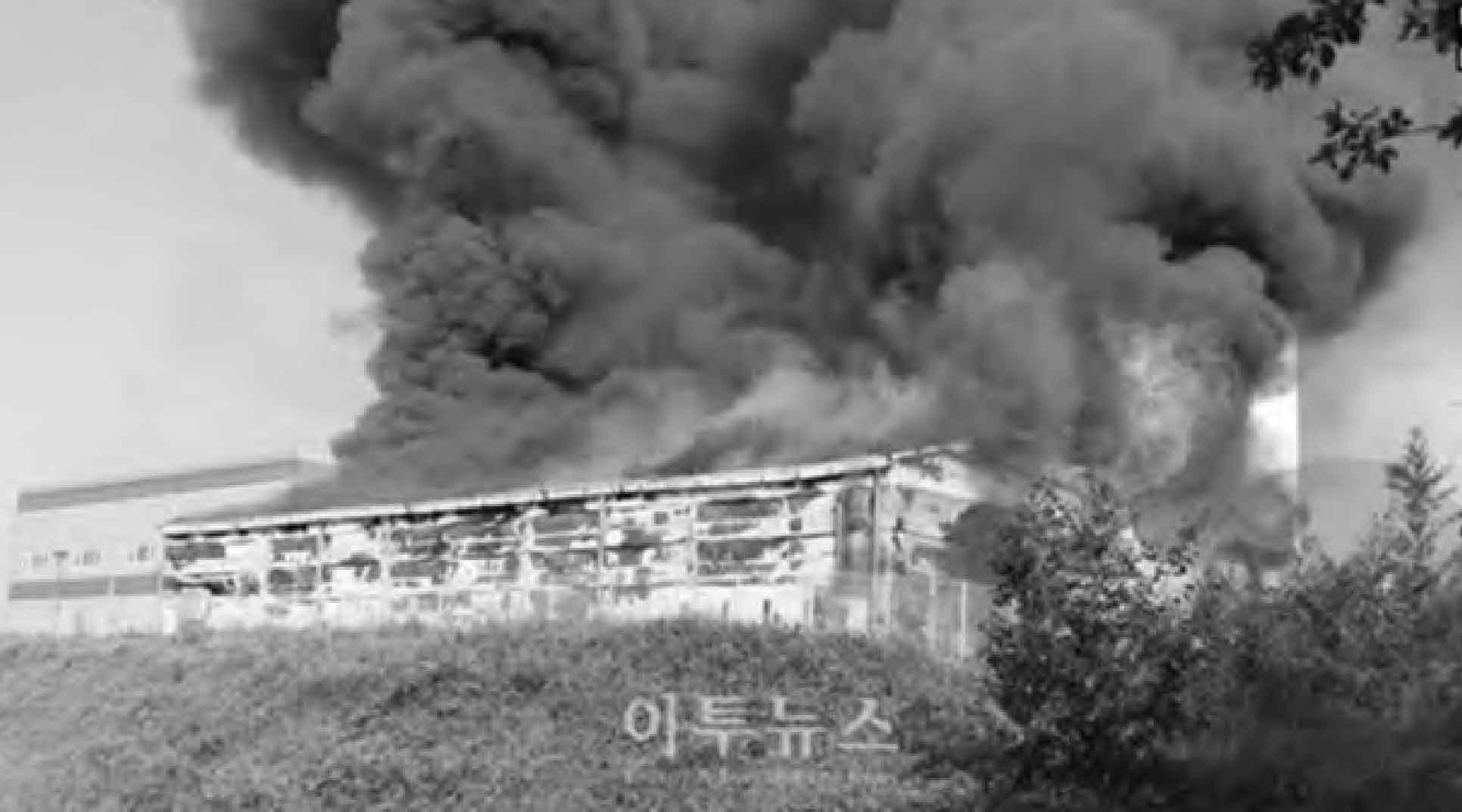
1.Composition of energy storage system and characteristics of thermal runaway

The chemical energy storage system mainly consists of battery packs, battery management systems (BMS), energy management systems (EMS), energy storage converters (PCS), thermal management systems, and other electrical equipment. The system consists of a single battery cell, a battery module PACK, and finally a battery cluster assembled into an energy storage system. The battery pack is the main component of the energy storage system, responsible for energy storage; The battery management system is mainly responsible for monitoring, evaluating, protecting, and balancing batteries; The energy management system is responsible for data collection, network monitoring, and energy scheduling; By utilizing an energy storage converter, the charging and discharging processes of the energy storage battery are regulated, and the energy storage battery pack is operated through control strategies to achieve the conversion of electrical energy between AC and DC.

Lithium ion batteries have experienced thermal runaway, and various accident investigations have shown that possible causes of ignition include: damage to the Battery Management System (BMS) contactor (Switchgear), which directly ignites after the current device control fails, leading to battery ignition; External short circuit, including misoperation of busbar detachment caused by high local contact resistance of cables; The battery itself catches fire, including internal short circuits (manufacturing defects), charging and discharging management (external control), etc; Through extensive analysis and research on the fire mechanism of lithium-ion batteries [4-5], it was found that “thermal runaway” is the fundamental cause of safety hazards in lithium-ion batteries. The use of external heating to trigger thermal runaway of the battery cell manifests in three stages. In the first stage, the battery cells are continuously heated; The temperature can reach 150 ℃; At this point, if the BMS is normal, a temperature alarm can be triggered and protected; BMS will notify the fire extinguishing system, but only a single temperature condition will not trigger the fire extinguishing system; If the battery cell has an internal short circuit, even BMS protection cannot prevent accidents from occurring; If the BMS is abnormal, the protection fails; In the second stage, the cell opens the valve; At this point, due to high internal air pressure, the battery cell opens the valve and releases combustible gas, which can cause a fire; The fire extinguishing system will detect smoke, but may not be able to detect temperature. If the BMS is normal and temperature information is reported, the fire extinguishing system will be activated; On the contrary, it will not start; In the third stage, the battery cell loses thermal control; At this point, if the temperature of the second battery cell continues to rapidly rise after the valve is opened, the battery cell enters a state of thermal runaway, releasing more heat and having the opportunity to trigger the spread of thermal runaway; In the same stage two, if an open flame occurs, the fire extinguishing system will be activated; However, the risk at this point is the speed of extinguishing the fire and the speed of thermal runaway spread; In order to reduce the level of accident risk and economic losses, it is necessary to put forward high requirements for the timing and measures of fire warning, suppression, and firefighting in energy storage power plants. Battery fires are not only the release of electrochemical energy, but also strong chemical energy. Thermal runaway of lithium iron phosphate batteries can produce flammable and toxic gases. The gases generated by thermal runaway include common gases such as carbon dioxide, carbon monoxide, hydrogen, ethylene, methane, ethane, and propylene, while also taking into account the secondary gas H2. Gases have strong flammability and explosiveness.
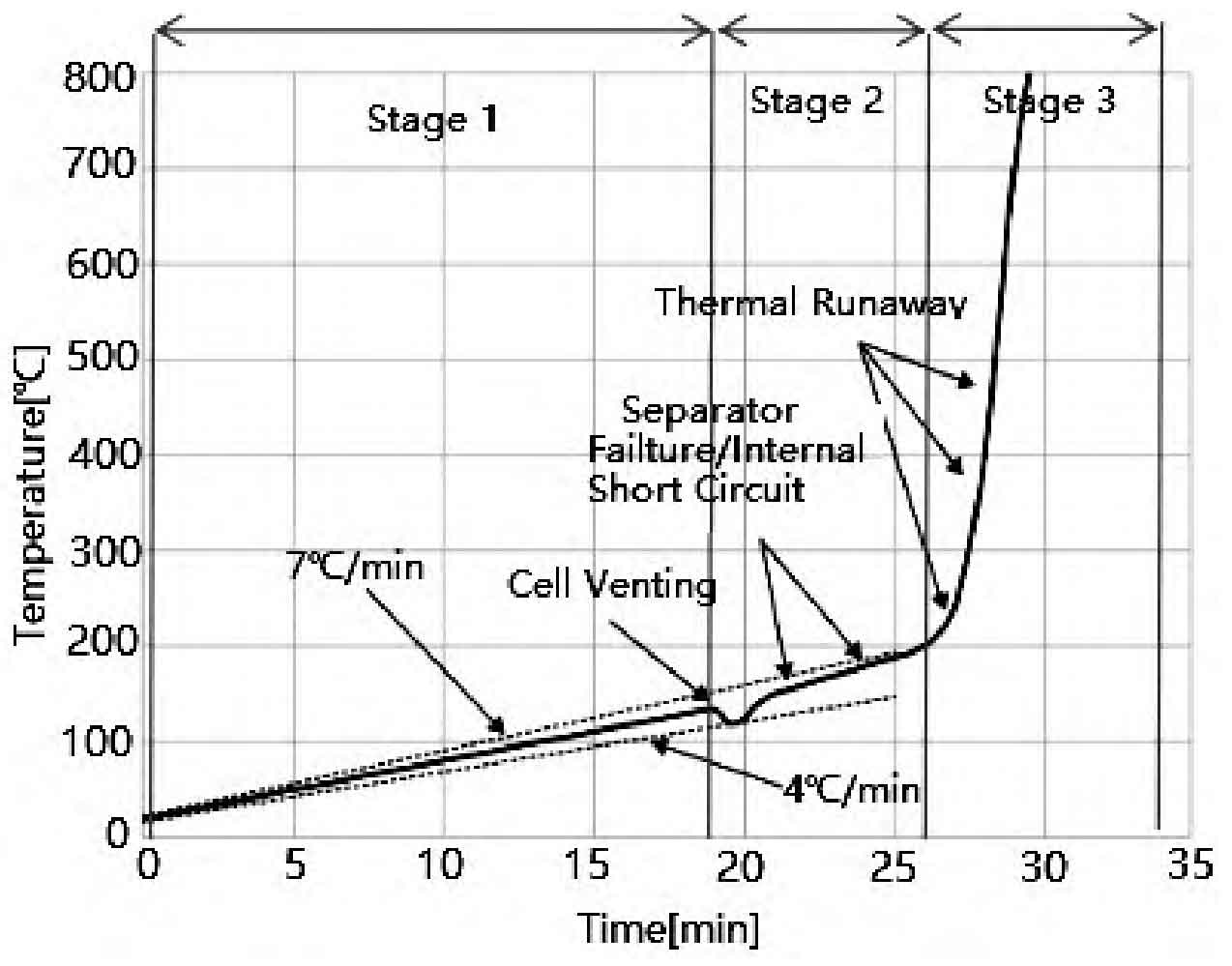
Therefore, thermal runaway has the following fire characteristics:
(1) Short time (temperature can exceed 300 ℃ within 3 seconds);
(2) Continuity (a failure of a certain battery cell rapidly expands to a fire in the entire battery box and may spread to the entire energy storage container);
(3) During the process of chemical reactions, a large amount of combustible gases such as oxygen, carbon monoxide, and hydrogen are released;
(4) Super strong reignition ability;
(5) Strong combustible gas deflagration fire.
The complex characteristics of fires make traditional firefighting techniques unable to cope with such new types of fires.
2. Standard specifications and research
At present, various countries have released a series of relevant standards on the existing technology of energy storage battery systems, and have conducted research on the safety of energy storage power stations from the aspects of standard specifications and research reports. The International Electrotechnical Organization (IEC), Underwriters Laboratories (UL), and DNV-GL have all issued corresponding standards. China also established the National Electricity Energy Storage Standards Committee (SAC TC 550) in 2014 and issued multiple standards such as “Lithium ion Batteries for Electric Energy Storage” (GB/T 36276-2018) and “Technical Regulations for Electrochemical Energy Storage Systems Connected to the Grid” (GB/T 36547-2018), which set safety performance requirements for individual batteries and battery modules. The “Code for Design of Electrochemical Energy Storage Power Stations” (GB51048-2014) specifies that the fire hazard level of lithium-ion battery rooms is Class E. Most of these specifications are in the stage of formulation and exploration, and the applicability of technical specifications for lithium-ion battery energy storage systems is insufficient.
A large amount of research has been conducted internationally on the fire safety of lithium-ion energy storage systems. In 2015, the National Fire Protection Association (NFPA) invited relevant institutions to discuss the construction environment, installation, and fire protection facility settings of energy storage systems. It was agreed that the construction of energy storage systems should have three stages, and the fire prevention and rescue of the system should be considered based on its different application stages; In 2016, the Federation of Factories and Insurers (FM) of the United States formulated the specifications for the “Development of Recommendations for the Protection of Large Storage Lithium Ion Batteries: Sprinkler Fire Extinguishing Experiments”, mainly targeting the spread and firefighting of fires during battery storage, pointing out that there are certain differences in combustion characteristics and firefighting due to the complexity of the system; In 2017, DNV-GL Classification Society completed a research report on “Safety considerations for energy storage fires”, providing the main conclusions and recommendations for conducting fire extinguishing tests on energy storage batteries; The European Copper Association has also completed the report “Application Description of Energy Storage Systems after Meters for Renewable Energy Integration”, and believes that it is necessary to conduct targeted research on fire detection and firefighting equipment for energy storage systems; In recent years, China has also conducted extensive research on the thermal runaway, combustion characteristics, explosion intensity, and smoke toxicity of batteries and battery systems. Research has also begun on the fire occurrence and development behavior of lithium-ion energy storage modules and battery clusters.
3.Fire extinguishing technology suitable for lithium battery energy storage systems
The gas fire extinguishing system was applied earlier, but the problem is that after the gas fire extinguishing is completed, the battery may also have a strong exothermic reaction, which can lead to a recurrence of the fire after reignition. Currently, although there are many technical methods used for the fire safety of lithium-ion batteries, the actual effects vary significantly, especially in terms of suppressing battery temperature. Considering the characteristics of electrochemical energy storage power plant fires, a single extinguishing agent and solution cannot effectively control the fire situation in a short period of time.
3.1 Fire extinguishing agent
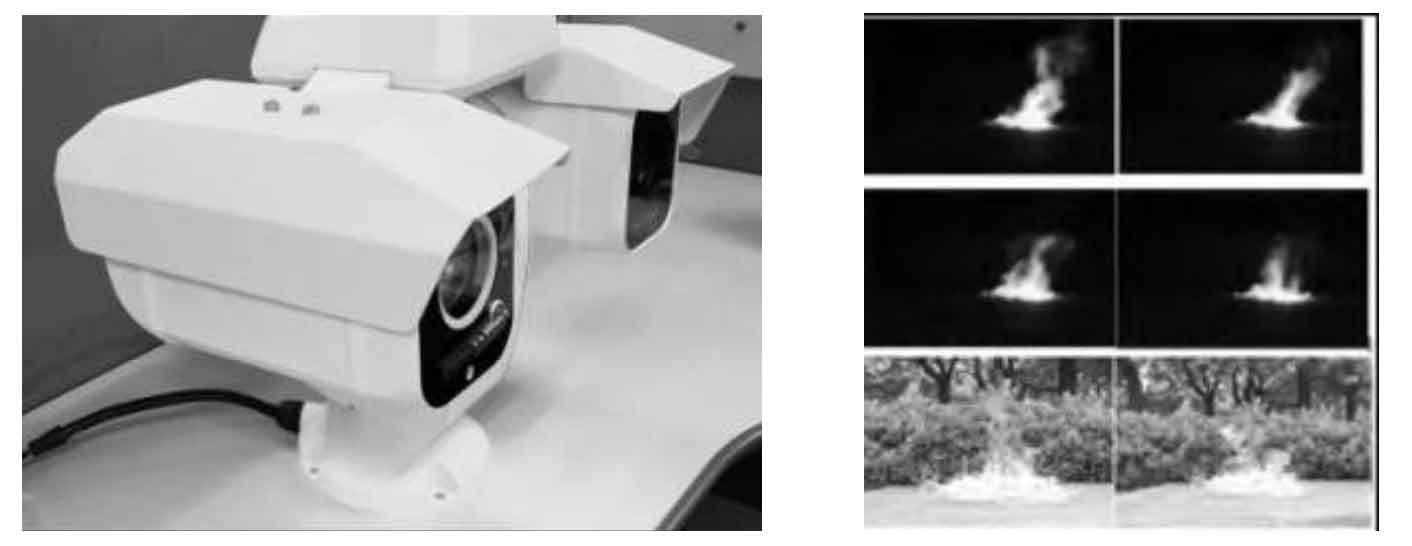
Due to the unique nature of lithium-ion battery fires, the optimal extinguishing agent has not yet been determined. At present, there are three main types of fire extinguishing agents used in fire safety: gaseous fire extinguishing agents, liquid fire extinguishing agents, and solid fire extinguishing agents. Fire extinguishing agents have undergone the development of halon fire extinguishing technologies such as Halon 1301 and Halon 1211, hydrofluorocarbon (HFC) fire extinguishing technologies such as heptafluoropropane, hexafluoropropane, trifluoromethane, inert gas (IG) fire extinguishing technologies such as IG541 (mixed gas), IG100 (total nitrogen), CO2 (carbon dioxide), and the new fluorine ketone (FK) fire extinguishing technology FK-5-1-12 (perfluorohexanone). The fourth generation fluoroketone (FK) fire extinguishing technology uses perfluorohexaketone type fire extinguishing agents, which have a larger heat capacity to absorb more heat compared to heptafluoropropane (hot melt 128 J/mol/K), and can reach a heat capacity of 282 J/mol/K. Having a larger heat capacity than other fire extinguishing gases means that they can absorb more heat energy, reducing the combustion temperature to the hot spot where the flame extinguishes. Heavier polymer gases can maintain stability for a longer time, form stable mixtures with combustible gases, lock in smoke, combustible gases, and carbon monoxide, and suppress or interfere with the combustion power of combustible gases. The main extinguishing mechanism of perfluorohexaketone fire extinguishing agents is to carry away the heat in the flame to achieve fire extinguishing. After spraying, a combined gas mixture with air is formed, which has a much larger hot melt than pure air. A larger hot melt means that the mixed gas can absorb more heat energy, effectively achieving physical, chemical, and inert fire extinguishing functions. Chemical fire extinguishing mainly involves capturing free radicals to effectively prevent chain chemical reactions that cause flame expansion, thereby suppressing the spread and deterioration of the fire; The main extinguishing mechanism in physical fire extinguishing is to remove a large amount of heat through the intense thermal movement of the extinguishing agent molecules, thereby achieving cooling effect. This strong heat absorption ability causes the flame to quickly lose heat, thereby interrupting the chain reaction of combustion and playing a role in inerting and extinguishing fire. Through practice, perfluorohexanone is currently a feasible extinguishing agent and technology for extinguishing lithium battery fires.
3.2 Detection Technology and Intelligent Fire Protection

The use of thermal runaway characteristic gases from lithium-ion batteries as a detection and warning method has been widely used in energy storage stations. Composite fire detectors and warning sensors are installed inside the lithium-ion battery tank, sensing high temperatures, smoke, hydrocarbon gases, hydrogen, and carbon monoxide through detectors. When the relevant signals in the battery box reach the set value, the detectors transmit the signals to the controller. The fire detector only provides a set value switch signal and starts the fire extinguishing system after logical analysis of more than one signal; Sensors can provide digital values of different perception signals 24/7 for early warning and pre processing.
New technologies for fire video image detection and infrared thermal imaging flame recognition, visible light video and infrared thermal imaging video flame image recognition technology, combined with the static and dynamic characteristics of flames, as well as their imaging characteristics in visible light and infrared images, use deep learning models to identify flames. Its dynamic flame feature recognition is similar to dynamic facial feature recognition, which can prevent misidentification and false alarms of various types of non flame lighting. It has the characteristics of low false alarms, high accuracy, and fast detection response.
The Internet of Things technology and smart cloud information control platform are combined with fire protection systems, and smart fire control technology is applied to the safety protection system of energy storage facilities. The intelligent fire control system provides early detection and early warning, timely processing, and more importantly, it can provide fire alarms to relevant personnel more quickly and timely. The fire alarm and extinguishing situation can be sent to the terminal monitoring equipment of relevant personnel or leaders, timely controlling the disaster situation, and implementing response plans as soon as possible to avoid being in a passive state that further expands the disaster situation; Through the 5G technology of the Internet of Things, potential release, avoidable or unavoidable situations can be known in advance before a fire occurs, enhancing emergency response control capabilities. Implement daily equipment maintenance, early warning information, and emergency control through cloud platforms; Professional operation, maintenance, and safety monitoring can ensure the healthy, efficient, and safe operation of energy storage power plants. The Zhihuiyun Information Control Platform operates monitoring through three levels: device monitoring, data analysis, and control strategy. At the equipment monitoring level, real-time monitoring of security, refrigeration, fire protection, battery packs, energy storage inverters, distribution cabinets, EMS, etc. in the energy storage system is mainly carried out through the operation and maintenance system, monitoring the operation status of each project and even each battery. At the data analysis level, the main approach is to collect massive operational data through monitoring platforms, maximize the value of the data, study the evolution of battery performance, and optimize system design. At the control strategy level, based on the analysis results of operational data, it is determined whether it is necessary to recalibrate the battery pack capacity, adjust the original control strategy, and even make hardware level changes to ensure the safe operation of the system. The intelligent cloud information control platform for energy storage power stations can predict the system status through online data analysis, guide operators to provide professional services such as offline inspections, equipment testing, maintenance, and emergency repairs, and thus achieve early detection and early warning to ensure system safety and fire safety.
3.3 Fire extinguishing measures
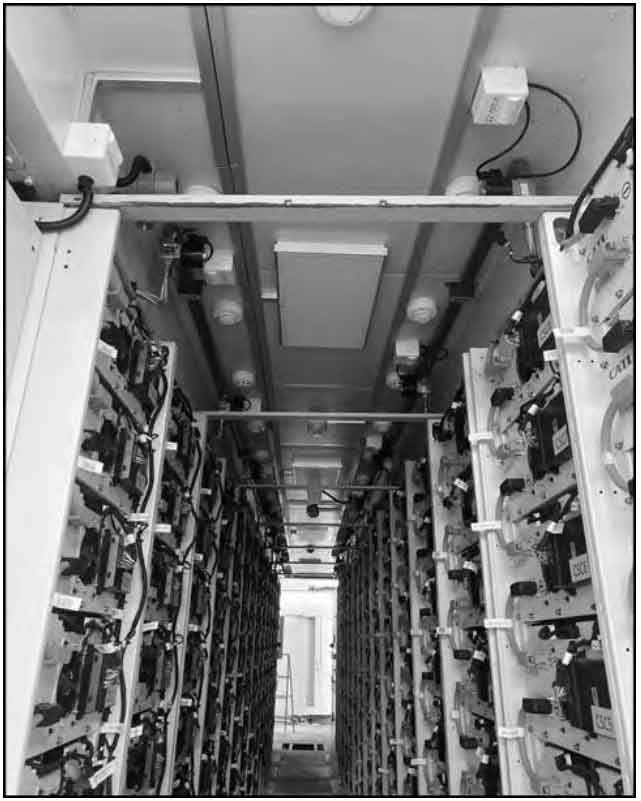
In order to achieve early detection and early warning of fires, extinguish fires by spraying fire extinguishing agents, maintain a stable state in the fire extinguishing area, suppress reignition, and perfectly solve battery fires, gas fire extinguishing is combined with ultrafine water mist fire extinguishing. By combining the intelligent cloud information control platform with the fire protection system, communication connections are established between BMS and FAS, and sudden changes in voltage and temperature of BMS signals (sourced from the battery cell module itself) are utilized, Detect the thermal runaway state of battery fires, accurately locate the ignition point, and link the fire protection system to timely carry out fire extinguishing. The fully submerged gas fire extinguishing system, single cluster distributed deep gas fire extinguishing system, and modular physical automatic triggering fire extinguishing system operate independently and in real-time according to the priority, backup 1, and backup 2 schemes. Modular fire protection, cluster fire protection, and overall system fire protection form a three-dimensional and multi-directional fire protection system, with each system running independently and starting in real-time as needed. The simultaneous use of gas and ultra-fine water mist for extinguishing fires caused by lithium-ion batteries has a better extinguishing effect. It can not only extinguish open flames in a short period of time and reduce the heat of the battery, but also to some extent prevent the fire from reigniting.
Lithium ion battery energy storage has the potential for thermal runaway and explosion accidents, which is a key concern in energy storage applications. The combination of Internet of Things technology and intelligent cloud information control platform with fire protection systems adopts advanced detection technology, gas fire extinguishing combined with ultra-fine water mist fire extinguishing, module fire protection, cluster fire protection, and whole system fire protection, forming a three-dimensional and multi-directional fire protection system, which will have better performance on the fire extinguishing effect of lithium-ion batteries. Adopting multi-level three-dimensional fire extinguishing, achieving and early intervention, preventing disasters before they occur, and minimizing disaster situations. The development of fire protection industry believes that in the future, better fire extinguishing technology will be applied in the chemical energy storage industry, contributing to the “dual carbon” energy reform of new energy.
